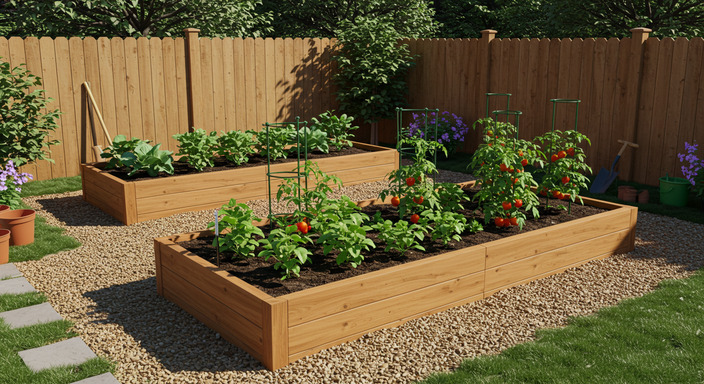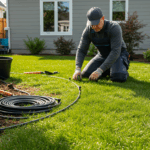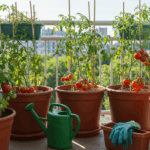Why a Raised Garden Bed?
Have you ever wondered how to maximize your gardening potential while reducing the strain on your back? The answer might just be raised garden beds. These structures have gained immense popularity among both novice and experienced gardeners due to their versatility, accessibility, and efficiency. But what exactly makes raised garden beds a superior choice for your gardening needs? In this comprehensive article, we’ll explore all aspects of raised garden beds, from their benefits and types to construction tips and maintenance.
Understanding the Basics of Raised Garden Beds
Raised garden beds are essentially boxes or enclosures built above the natural ground level to contain soil and plants. They are often constructed using wood, stone, or other durable materials and are typically filled with high-quality soil. The primary purpose of a raised garden bed is to provide a controlled environment for growing plants, which can lead to enhanced plant health and yield.
| Feature | Benefit | Consideration |
|---|---|---|
| Elevated Soil | Improves drainage | Potential for drying out |
| Material Choice | Durability | Cost may vary |
| Size | Customizable space | Large beds can be hard to manage |
| Accessibility | Reduces bending strain | Initial setup labor |
Exploring Different Materials for Raised Garden Beds
The choice of material for your raised garden bed can significantly influence its durability, aesthetics, and environmental impact. Wooden beds are a popular choice due to their natural look and ease of construction. However, hardwoods like cedar and redwood are preferred for their resistance to rot and insects. Stone or brick beds offer a more permanent solution and can add a touch of elegance to your garden. On the other hand, metal beds provide a modern appearance and are known for their longevity.
“Gardening is the art that uses flowers and plants as paint, and the soil and sky as canvas.”
The true beauty of raised garden beds is that they can be as simple or elaborate as you desire, providing countless opportunities to express your creativity and gardening skills.
Design Considerations for Optimal Raised Garden Beds
When designing a raised garden bed, it’s crucial to consider aspects such as location, size, and sunlight. Situate your bed in a spot that receives ample sunlight, typically six to eight hours a day, to ensure your plants thrive. The size of the bed should be manageable, allowing you to reach all areas for planting and maintenance without stepping into the bed. A width of four feet is generally advisable for easy access from both sides.
Soil: The Building Block of Healthy Raised Gardens
The choice of soil is paramount to the success of your raised garden bed. Unlike traditional gardening, you have the freedom to fill your bed with high-quality, well-draining soil that can significantly enhance plant growth. A popular choice is a mix of one-third topsoil, one-third compost, and one-third coarse sand or perlite to create a balanced and fertile growing environment.
Choosing the Right Plants for Raised Garden Beds
Selecting the appropriate plants is an essential task when planning your raised garden bed. Consider crops that grow well in the soil and climate you are providing. Vegetables such as lettuce, kale, carrots, and radishes are excellent choices for raised beds, as they benefit immensely from the improved drainage and soil quality. Additionally, utilizing companion planting can help deter pests and improve yields.
Watering Techniques for Raised Garden Beds
Proper watering is crucial for maintaining the vitality of plants in raised beds. An advantage of elevated soil is improved drainage, which reduces waterlogging, but can also lead to quicker drying. Implementing drip irrigation systems or soaker hoses can ensure consistent moisture levels. Regular monitoring is key, especially during hot weather, to adjust watering schedules as needed.
Simple Steps to Building Your Raised Garden Bed
Constructing your own raised garden bed can be a rewarding project. Here are some simple steps to guide you through the process:
1. Select a location with adequate sunlight.
2. Choose the material and design for your bed.
3. Assemble the structure and secure it firmly.
4. Fill with high-quality soil mixture.
5. Plan and plant your desired crops.
Taking these steps will help set the foundation for a thriving raised garden bed.
Maintenance and Upkeep of Raised Garden Beds
Regular maintenance is vital for the survival and productivity of your raised garden bed. Tasks such as weeding, pruning, and pest management should be performed routinely. Mulching can help retain soil moisture and suppress weed growth. Additionally, replenishing the soil with compost annually can maintain its fertility and support strong plant growth.
FAQ – Common Questions about Raised Garden Beds
What are the benefits of using raised garden beds compared to traditional gardening?
Raised garden beds offer better drainage, reduced soil compaction, and higher accessibility, making them ideal for gardeners of all ages.
Can I build a raised garden bed on a patio?
Yes, raised garden beds can be placed on patios or other hard surfaces. Ensure proper drainage is established to avoid waterlogging.
What is the recommended height for a raised garden bed?
The ideal height ranges from 6 to 24 inches, depending on the plants you wish to grow and your personal comfort with reaching into the bed.
How can I prevent pests in my raised garden bed?
Utilize companion planting, physical barriers, and natural pest repellents to maintain a healthy and pest-free environment.
Do I need to line the bottom of my raised garden bed?
Lining the bottom with landscape fabric can prevent weeds from penetrating while still allowing for adequate drainage.
What type of mulch is best for raised garden beds?
Organic mulches like straw, bark chips, or compost are effective in retaining moisture and suppressing weeds.
Conclusion
Raised garden beds present a marvelous opportunity to enhance your gardening experience with their flexibility and practicality. By understanding the fundamentals of construction, maintenance, and plant selection, you can enjoy a bountiful harvest from your raised garden bed. As a sustainable and productive gardening method, raised garden beds provide a wonderful way to connect with nature and cultivate a space teeming with life and beauty.
Meta Descrição: Discover the world of raised garden beds with tips on materials, soil, plants, and more in this comprehensive guide of over 2,250 words.







